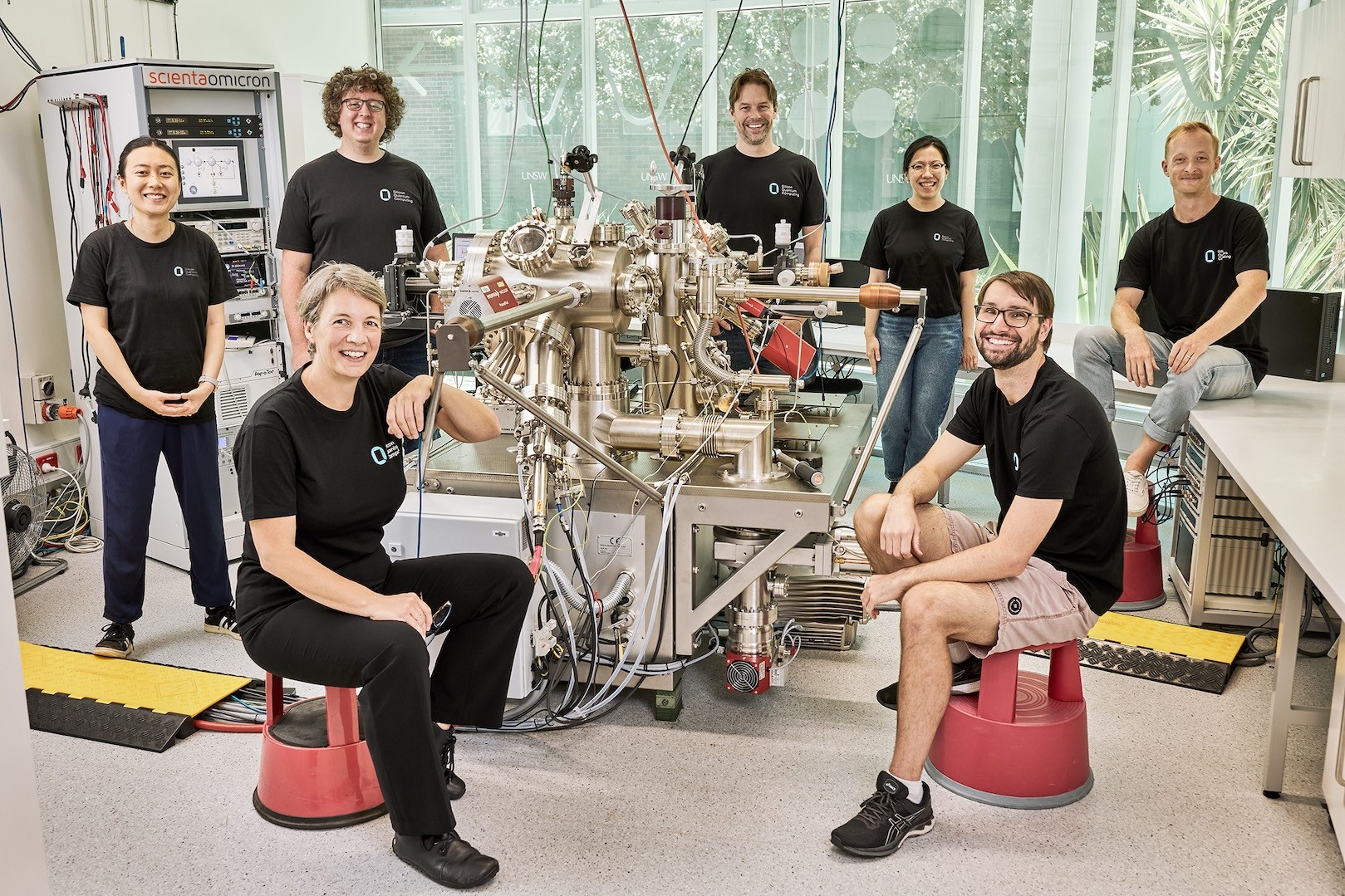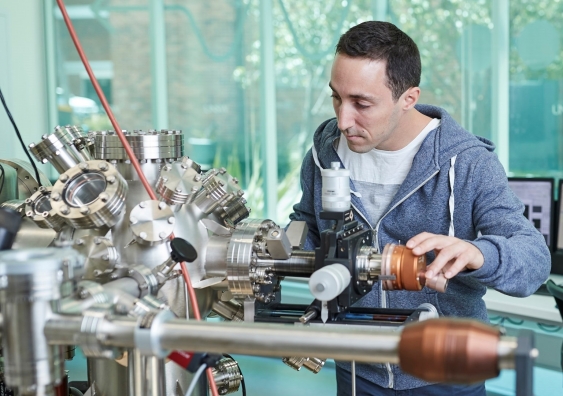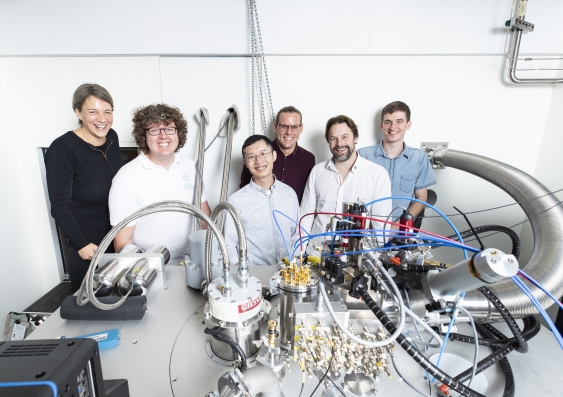UNSW quantum scientists deliver world’s first integrated circuit at the atomic scale
2022-06-23T15:09:00+10:00

From left to right: Industry and Science Minister Ed Husic, UNSW Professor Michelle Simmons and UNSW Vice-Chancellor and President Attila Brungs.
Photo: UNSW Sydney
The technical breakthrough, announced at an event at UNSW Sydney today, was published in the journal Nature.
Industry and Science Minister Ed Husic has touted the world-leading work of UNSW Sydney quantum scientists during a visit to the Kensington campus on Thursday.
Mr Husic, who was on campus for the announcement of a significant technical breakthrough by UNSW Professor Michelle Simmons and the team at Silicon Quantum Computing (SQC), said the latest development is evidence of Australia’s superiority in the space.
“I want to tell you how much what you do means to the country,” said Mr Husic, referring to the SQC team gathered at the event. “You are contributing over a long period of time to something that is a big deal not just for the country, but for the world.”
Mr Husic acknowledged the work of Prof. Simmons and the SQC researchers who announced the development of the world’s first integrated circuit manufactured at the atomic scale.
“Our quantum capabilities are clearly world-leading and building on the proud history of research excellence,” Mr Husic said. “It is a clear sign that our companies, our entrepreneurs and our researchers are some of the world’s best.”
Keeping quantum research in Australia
Mr Husic also highlighted the government’s commitment to keeping talent in Australia.
The government has announced an investment of $1 billion in the form of a Critical Technology Fund as part of the broader National Reconstruction Fund. This will help to support home-grown innovation and production in areas like engineering, data science, software development, AI, robotics, and quantum.
To ensure the continuous growth and supercharge the quantum computing industry, the government is providing $4 million for up to 20 PhDs in quantum research to support universities as they establish national research and education partnerships.
“I want the world to know what you are doing, and I want to fight every single day to stop anyone leaving this country that’s involved in quantum,” Mr Husic said. “I want the world to come here, instead of us going there.”
Mr Husic pointed to a range of statistics that show Australia punches well above its weight when it comes quantum research. Australia accounts for a third of 1 per cent of the world’s population, but it accounts for 4.2 per cent of global quantum research. Quantum technology research by Australian researchers is cited 60 per cent more than the global average. Eleven Australian universities rank above the global standard for quantum technology research.
A career high for Michelle Simmons
Prof. Simmons, founder and director of SQC, described the technical breakthrough as the biggest result of her career.
“This has never been done before and nobody else in the world can do it,” Prof Simmons said. “It is a hugely exciting result and what is even more exciting for us is having done that, we have seen that classical roadmap and that we know the commercial devices that are within the next five or six years.”
Prof Simmons and researchers from SQC used the integrated processor – known as an analogue quantum processor – to accurately model the quantum states of a small, organic polyacetylene molecule, proving a pathway to creating new materials that have never existed.
The advancement is a major step for SQC and its customers to construct quantum models for a range of new materials, from superconductors, materials for batteries, pharmaceuticals, or catalysts.
UNSW leads in quantum technology
UNSW Vice-Chancellor and President Professor Attila Brungs called the announcement history in the making.
“Today’s news puts SQC and UNSW researchers even closer to their goal and reinforces this University’s position at the forefront of quantum technology,” Prof Brungs said.
“It is the culmination of many years of hard work and is an exemplar of the power of collaboration.”
SQC is a private company formed in 2017 through a joint initiative with the Commonwealth government, UNSW Sydney, Telstra Corporation, the Commonwealth Bank of Australia, and the NSW government.
Related stories
-

The Royal Society awards Michelle Simmons the prestigious Bakerian Medal
-

Scientists emulate nature in quantum leap towards computers of the future
-

Hitting the quantum ‘sweet spot’: researchers find best position for atom qubits in silicon
-

200 times faster than ever before: the speediest quantum operation yet


